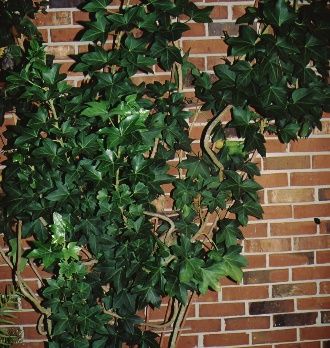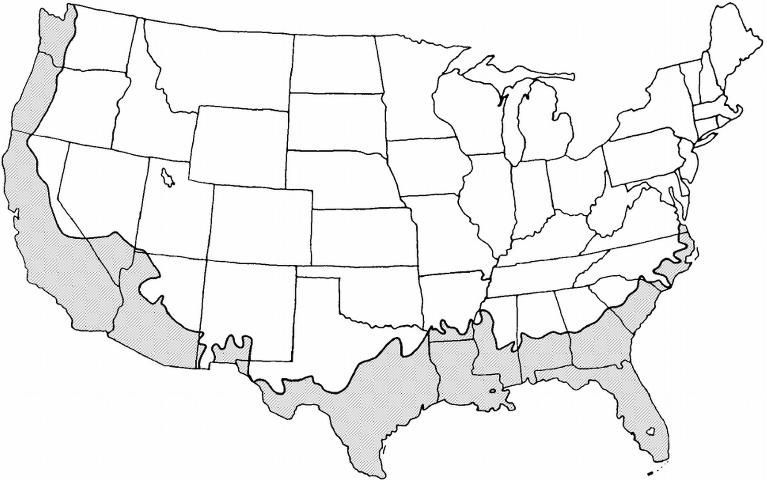Introduction
Bush ivy is a rapidly growing, semi-climbing, evergreen shrub or vine which will reach 8 to 10 feet in height. It needs some training as it grows to shape it to the desired form. The large, shiny, 3 to 5 lobed leaves are 4 to 8 inches in width and 5 to 10 inches in length, creating a striking specimen for entranceways or other prominent locations. Bush ivy, a hybrid of Fatsia japonica, Fatsia, Moser's Japanese fatsia and Hedera helix, English ivy, was discovered in France and retains the outstanding features of both parents: large, lobed leaves and a vining growth habit.

Credit: Edward F. Gilman, UF/IFAS
General Information
Scientific name: x Fatshedera lizei
Pronunciation: fats-HED-dur-uh LYE-zee-eye
Common name(s): fatshedera, bush ivy
Family: Araliaceae
Plant type: vine
USDA hardiness zones: 8 through 11 (Figure 2)
Planting month for zone 8: year-round
Planting month for zone 9: year-round
Planting month for zone 10 and 11: year-round
Origin: not native to North America
Invasive potential: not known to be invasive
Uses: espalier
Availability: somewhat available, may have to go out of the region to find the plant

Credit:
Description
Height: depends upon supporting structure
Spread: 8 to 12 feet
Plant habit: spreading
Plant density: moderate
Growth rate: moderate
Texture: coarse
Foliage
Leaf arrangement: alternate
Leaf type: simple
Leaf margin: lobed
Leaf shape: star-shaped
Leaf venation: palmate
Leaf type and persistence: evergreen
Leaf blade length: 4 to 8 inches
Leaf color: green
Fall color: no fall color change
Fall characteristic: not showy
Flower
Flower color: white
Flower characteristic: summer flowering
Fruit
Fruit shape: unknown
Fruit length: unknown
Fruit cover: unknown
Fruit color: unknown
Fruit characteristic: inconspicuous and not showy
Trunk and Branches
Trunk/bark/branches: not particularly showy; typically, multi-trunked or clumping stems
Current year stem/twig color: green
Current year stem/twig thickness: very thick
Culture
Light requirement: plant grows in the shade
Soil tolerances: acidic; slightly alkaline; sand; loam; clay
Drought tolerance: moderate
Soil salt tolerances: poor
Plant spacing: 36 to 60 inches
Other
Roots: usually not a problem
Winter interest: no special winter interest
Outstanding plant: not particularly outstanding
Pest resistance: long-term health usually not affected by pests
Use and Management
Often grown in containers, bush ivy can be successfully used as an espalier if given support. It does nicely trained on a trellis or can be tied to a post or other vertical support. Untrained plants against a wall often send shoots out away from the wall creating a weeping mess that pulls the plant away from the wall. For this reason, it is not advisable to plant this if you do not plan on providing the occasional required pruning. New growth should be occasionally pinched to promote branching since stems rarely branch on their own.
Bush ivy can be grown in full sun in cool coastal regions in the northern part of its range but should otherwise be placed in partial or deep shade and protected from hot, drying winds. It will tolerate a wide range of soils and should be regularly watered. The cultivar 'Variegata' has white-bordered leaves. Propagation is by cuttings.
Pest and Diseases
Aphids and scale.
No diseases are of major concern.